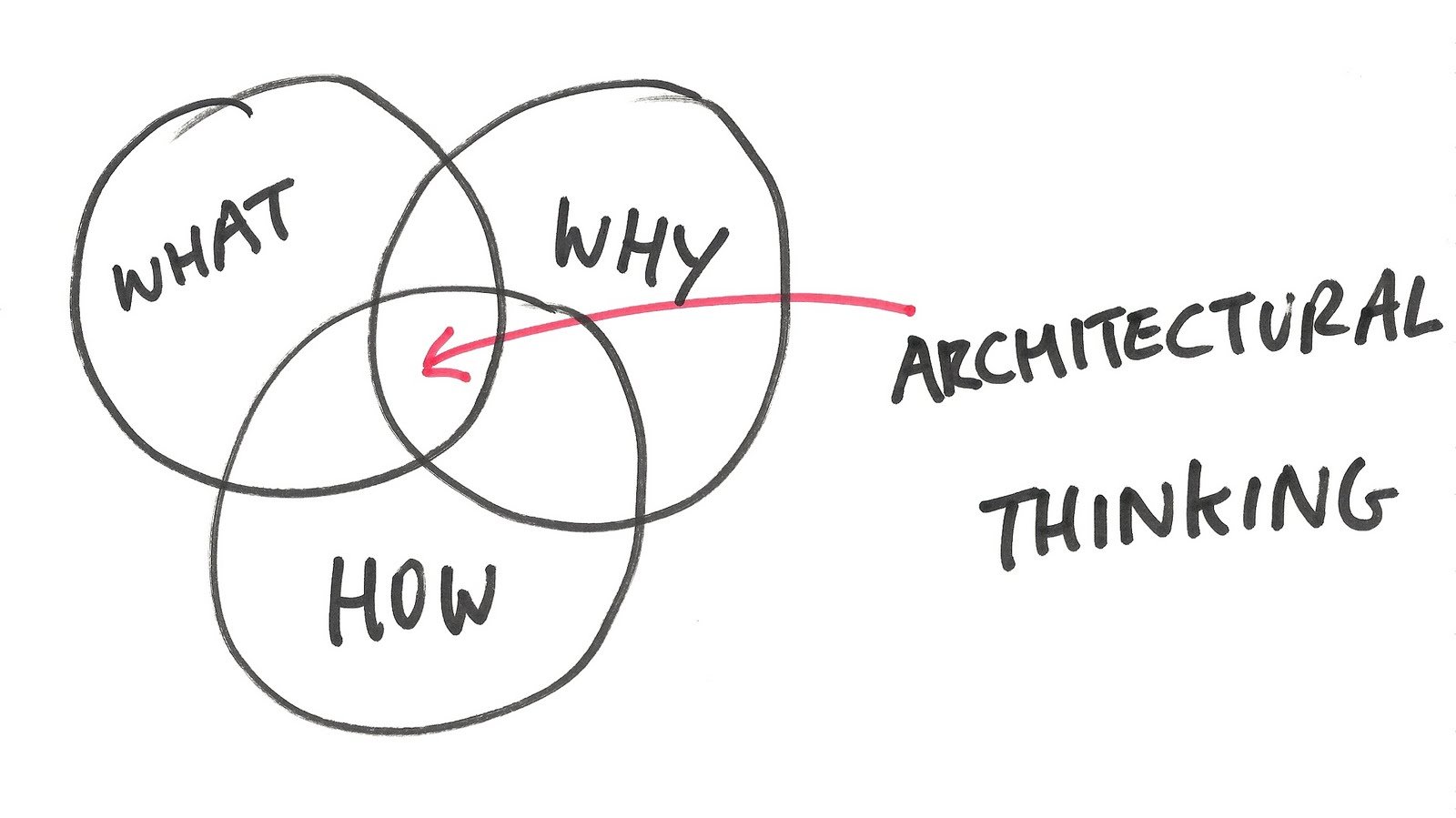The concept of Design thinking revolves around curating human-centred designs. Design thinking in architecture means having an innovative approach that helps coincide the needs of the human and advancements in technology. This is basically a design system with the human factor at the core. The two main concepts of human-centred design and changing technology just also resonate with a third aspect. This important aspect is Business. Hence, design thinking in architecture lies at the centre of three main aspects viz. Design, Technology and Business. Striking the right balance among these factors will eventually help us in achieving a well-thought design process.
Architectural Design

It is usually believed that Architecture must be in charge of all the design thinking that is needed. But how appropriately has this materialized? Ideally, architecture or architects are responsible for the design process. The whole idea of having an architect as a stakeholder in the construction process is to channelize the design process in a sensible and appropriate way. Architecture adds quality to design and explores various angles important for a design to thrive as a ‘good design’. But architecture as a profession has failed drastically. The influence of builder lobby is ruling over architecture. Architects have no say in the design and often become puppets of the other stakeholders.
Also, there is a lack of organisation and the growing negative work culture in the field of architecture. Thus, the focus has sited from ‘delivering designs’ to ‘Following clients instructions’. Hence this has eventually made the ‘design’ go for a toss. In order to achieve a better-built environment, we will have to make efforts to make some design thinking and follow the basic design protocols.
Design Thinking

Design thinking is a way of planning. It is applicable to all kinds of innovation. Design thinking works on the principle of Observing, learning, teaching, and applications of the human-centred techniques. This helps in solving the issues in a much better as well as systematic way. This is indeed a process that targets the core of the issues and provided result-oriented solutions.
Design thinking is a very common term in the UX design industry and involves steps like Empathize, Define, Ideate, Prototype and Test. Now, these guidelines are universal and applicable to all kinds of design genres. These aid in solving user issues in the digital world. Similarly, these are also very useful in solving users needs in the physical world of architecture.
Let us have a look at how these guidelines can help in solving architectural issues:
Empathy here would refer to first understanding the need of the built form in relation to the humans (User). This would further mean curating the brief and understanding the space requirements from the user perspective and user behavioural patterns.
Define would mean post identifying the issues, categorizing the issues and define them specifically to get specific solutions.
Ideate here means to design solutions with human ac the centre. This would further mean designing solutions specific to the defined issues. Furthermore, making sure the issues are dealt with appropriately. This would also include joining the specific solutions to form the overall scheme of the project.
The prototype, this is a very important stage as it gives us an insight as to how appropriate are all the assumptions and solutions designed. Architecturally, this would start with scale models and can grow up to the stage of 3d development.
Test, this stage would help in understanding how feasible are your solutions. This can range from later stages of 3d developments, Site checking, On-site mockups and Visualization through Virtual Reality.
Conclusion
These steps may not always be sequential and differed as per the design and the site scenarios. At times, Design is also executed phase-wise. Therefore, other implications of site, labour and finance are to be considered. But at the same time, equal importance must be given to the design process.
Design is the core of the architectural profession and if that itself is ignored, the profession is going o decline more. Many would argue that there are more practical things to handle in comparison to design. This is where the problem lies. The stakeholders of the architectural industry today, do not consider design as a part of the practical aspect of construction. And this is very evident from the discrepancies faced today in the architectural industry.



